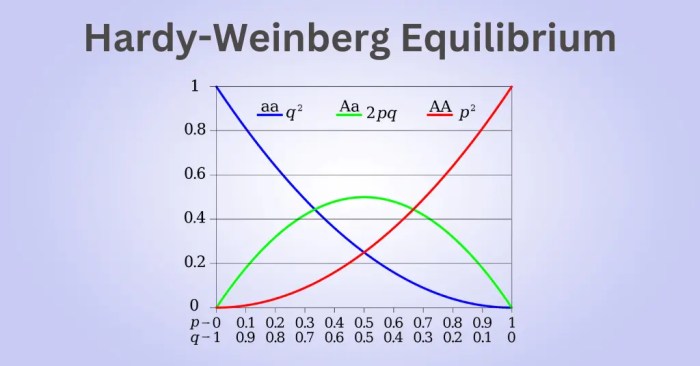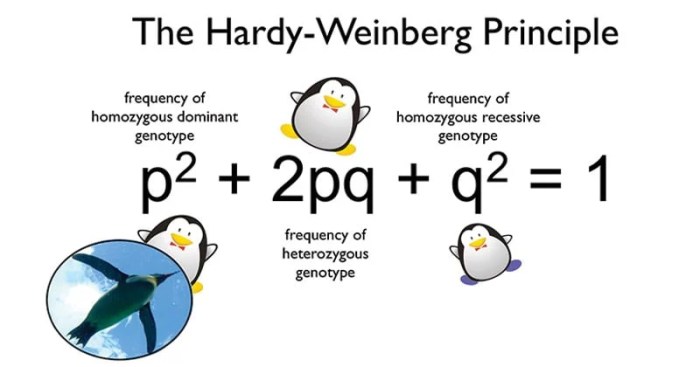Alien evolution a hardy weinberg adventure – Alien Evolution: A Hardy-Weinberg Adventure takes center stage, inviting readers into a realm of scientific exploration and imaginative speculation. This captivating discourse delves into the intriguing concept of extraterrestrial evolution, examining its significance in science fiction and the scientific principles that govern its potential existence.
As we embark on this intellectual journey, we will encounter diverse alien species from popular culture, each embodying unique evolutionary characteristics. We will explore the scientific theories and hypotheses that attempt to unravel the mysteries surrounding the evolution of life beyond our planet.
Alien Evolution: An Overview

Alien evolution, a captivating concept in science fiction, explores the potential for life beyond Earth to have evolved through natural processes. Extraterrestrial species, depicted in popular culture with diverse evolutionary characteristics, have sparked scientific inquiry into the mechanisms and theories surrounding their development.
From the xenomorphs in the Alien franchise, with their acid-spitting abilities and exoskeletons, to the Vulcans in Star Trek, with their heightened intelligence and emotional control, alien species showcase a vast array of adaptations and evolutionary trajectories. Scientific theories suggest that extraterrestrial life may have evolved through processes similar to those observed on Earth, including natural selection, genetic drift, and gene flow.
Hardy-Weinberg Equilibrium: A Foundation

The Hardy-Weinberg equilibrium is a fundamental concept in population genetics that describes the conditions under which allele and genotype frequencies in a population remain constant from one generation to the next. This equilibrium is maintained when certain assumptions are met, including no mutations, no gene flow, random mating, and no natural selection.
Factors that can disrupt the Hardy-Weinberg equilibrium include mutations, which introduce new alleles into the population; gene flow, which brings in alleles from other populations; non-random mating, which can alter allele frequencies due to mate selection preferences; and natural selection, which favors certain alleles over others, leading to changes in genotype frequencies.
The Hardy-Weinberg equilibrium can be applied to study alien populations to understand their genetic diversity, evolutionary history, and the factors that may be influencing their genetic makeup.
Evolutionary Forces in Alien Environments

Alien environments, whether on distant planets or in the depths of space, can exert profound influences on the evolution of extraterrestrial life. Environmental factors such as temperature, radiation levels, atmospheric composition, and resource availability can shape the selective pressures that drive evolutionary change.
Natural selection, the process by which organisms with advantageous traits are more likely to survive and reproduce, plays a crucial role in alien evolution. In extreme environments, such as on a planet with high levels of radiation, organisms may evolve adaptations to resist radiation damage.
Genetic drift, the random fluctuation of allele frequencies due to chance events, can also contribute to evolutionary change in small populations.
Gene flow, the movement of alleles between populations, can introduce new genetic variation and influence the evolutionary trajectory of alien species. This can occur through processes such as the exchange of genetic material between neighboring populations or the arrival of new individuals from distant regions.
Alien Intelligence and Communication

The potential for alien intelligence and its implications for human understanding are a subject of ongoing fascination and speculation. If extraterrestrial life exists, it is possible that some species may have evolved advanced cognitive abilities and communication systems.
The challenges of communicating with extraterrestrial civilizations lie in the vast distances between stars and the potential for linguistic and cultural barriers. However, scientists continue to explore methods for detecting and interpreting alien signals, such as through radio telescopes and SETI (Search for Extraterrestrial Intelligence) programs.
Hypothetical scenarios for encounters between humans and aliens raise questions about linguistic barriers, cultural differences, and the potential for misunderstandings or conflicts. It is essential to approach such encounters with respect, understanding, and a willingness to learn from alien perspectives.
Alien Technology and Advancement
Imagining advanced alien technologies can provide insights into the potential capabilities of extraterrestrial civilizations. From faster-than-light travel to energy sources beyond our current understanding, alien technology may surpass human capabilities in many ways.
The potential impact of alien technology on human society is both exciting and daunting. It could lead to advancements in medicine, energy production, and space exploration. However, it is important to consider the ethical implications and potential risks associated with acquiring and using alien technology.
A comparative table of human and alien technological capabilities would provide a framework for understanding the relative strengths and weaknesses of each species. This could inform decisions about future collaborations or interactions between humans and aliens.
Ethical Implications of Alien Contact
The prospect of alien contact raises important ethical considerations. It is crucial to approach extraterrestrial life with respect, understanding, and a commitment to minimizing any potential harm.
The potential benefits of alien contact include the exchange of knowledge, technological advancements, and a broader perspective on the universe. However, there are also risks to consider, such as the introduction of invasive species, cultural misunderstandings, or conflicts over resources.
It is the responsibility of humans to approach alien life with a sense of responsibility and to prioritize the well-being of both human and extraterrestrial civilizations. This includes respecting alien autonomy, protecting their environments, and engaging in respectful and cooperative interactions.
Common Queries: Alien Evolution A Hardy Weinberg Adventure
What is the Hardy-Weinberg equilibrium?
The Hardy-Weinberg equilibrium is a population genetics model that describes the conditions under which the frequencies of alleles and genotypes in a population remain constant from generation to generation.
How can the Hardy-Weinberg equilibrium be applied to study alien populations?
The Hardy-Weinberg equilibrium can be used to study alien populations by comparing the observed frequencies of alleles and genotypes to the expected frequencies under the assumption of no evolution.
What are some of the challenges of communicating with extraterrestrial civilizations?
Some of the challenges of communicating with extraterrestrial civilizations include the vast distances between stars, the potential for different languages and communication methods, and the possibility that alien civilizations may not be interested in communicating with us.